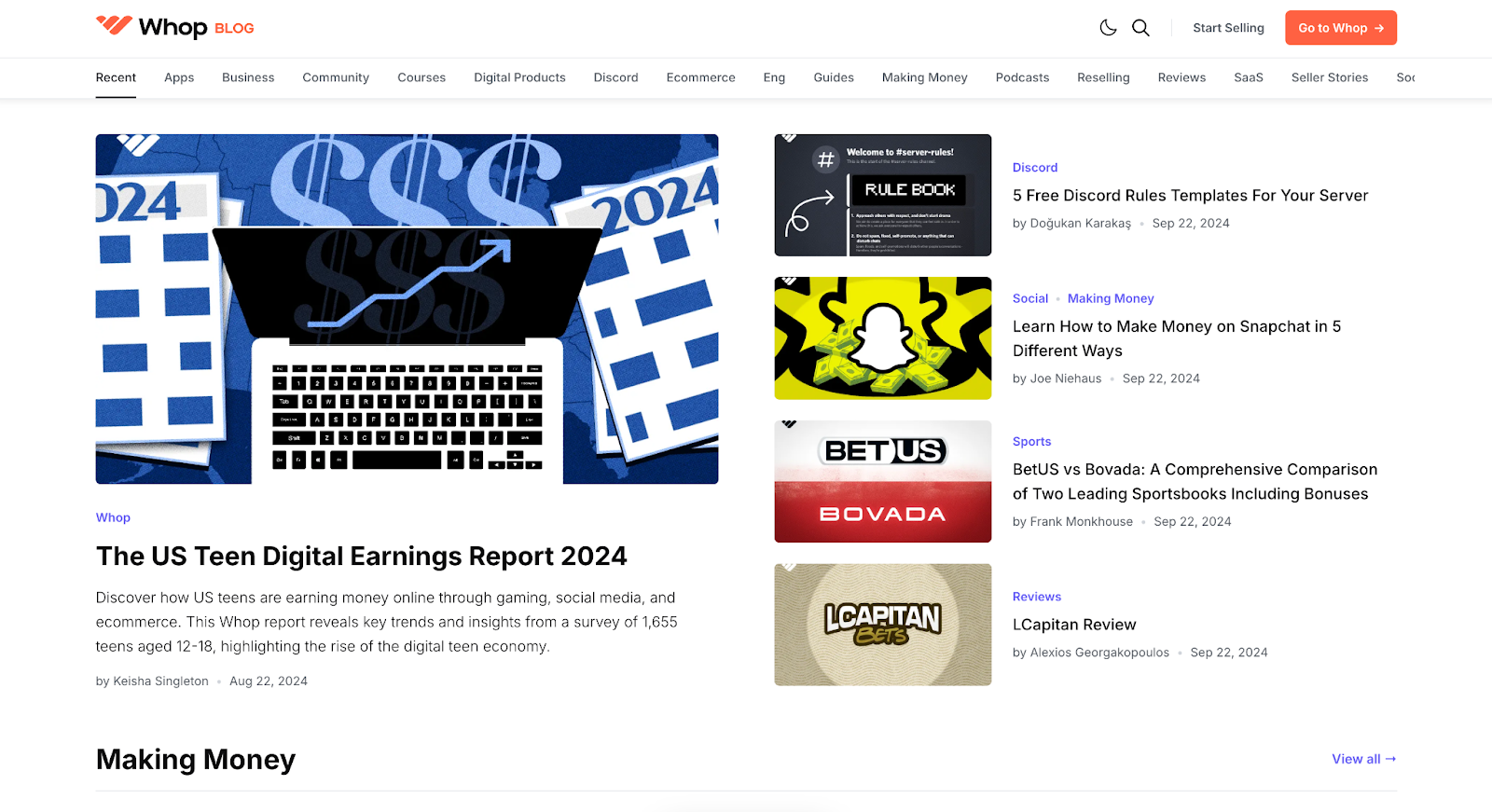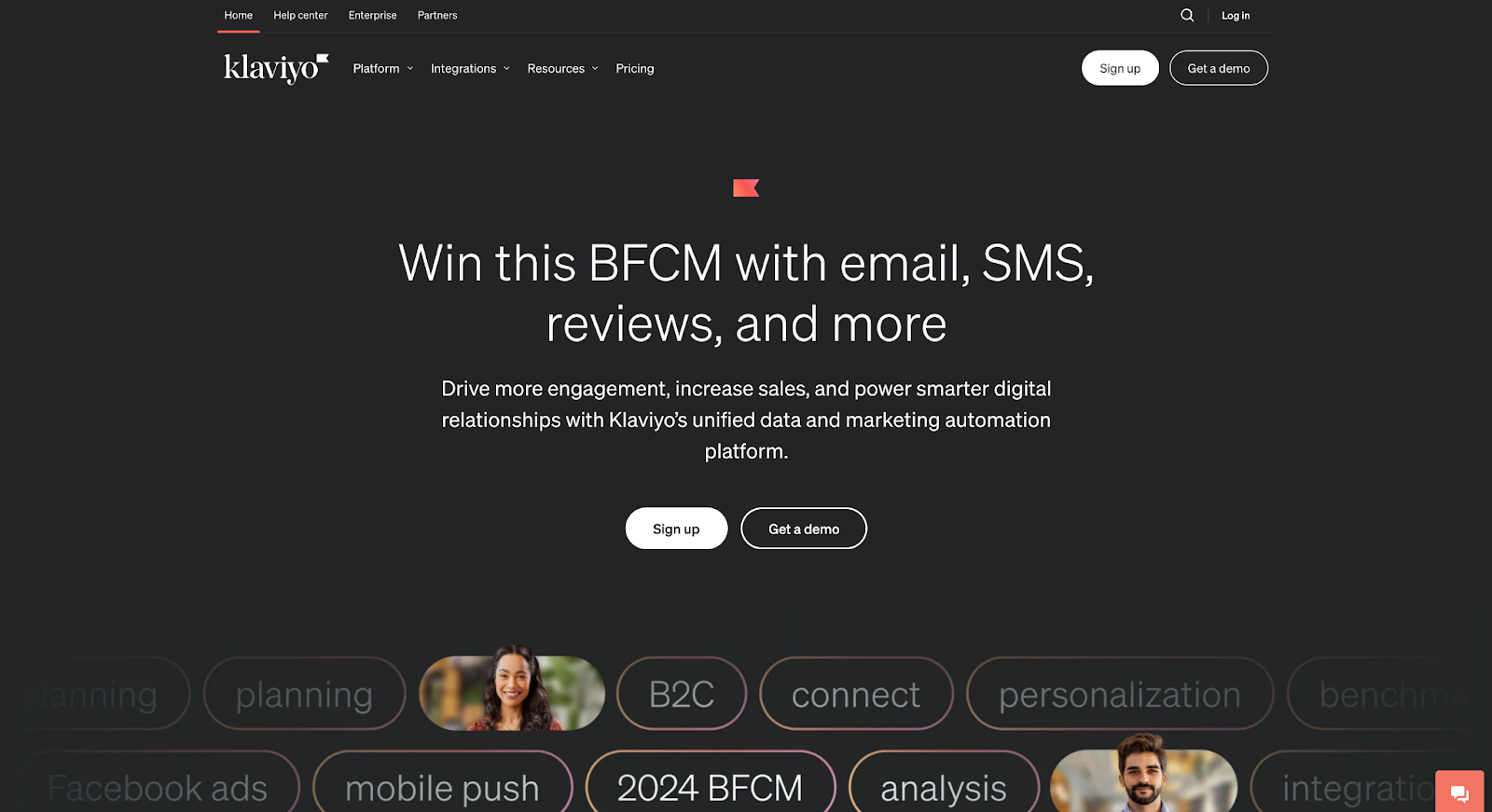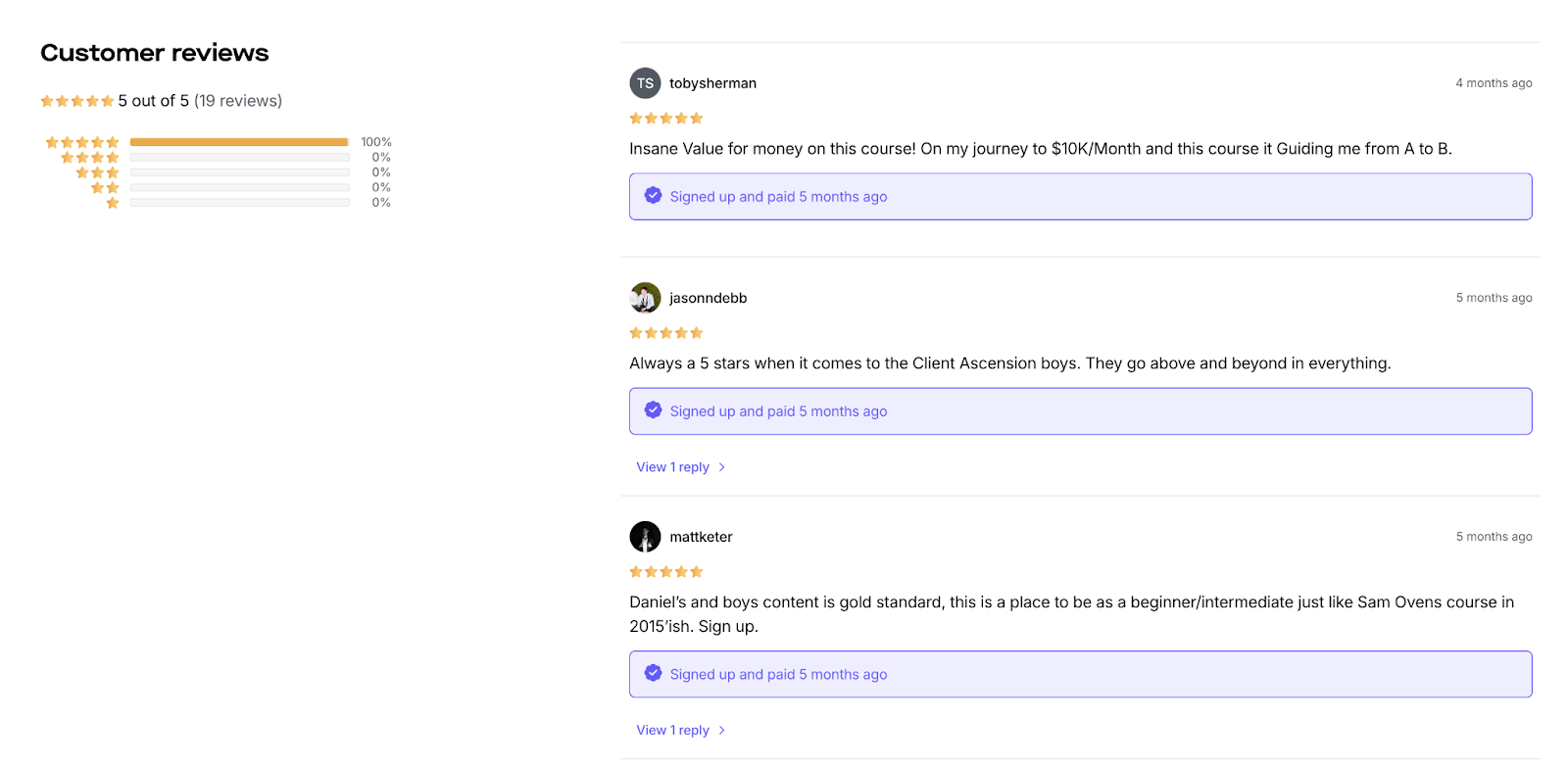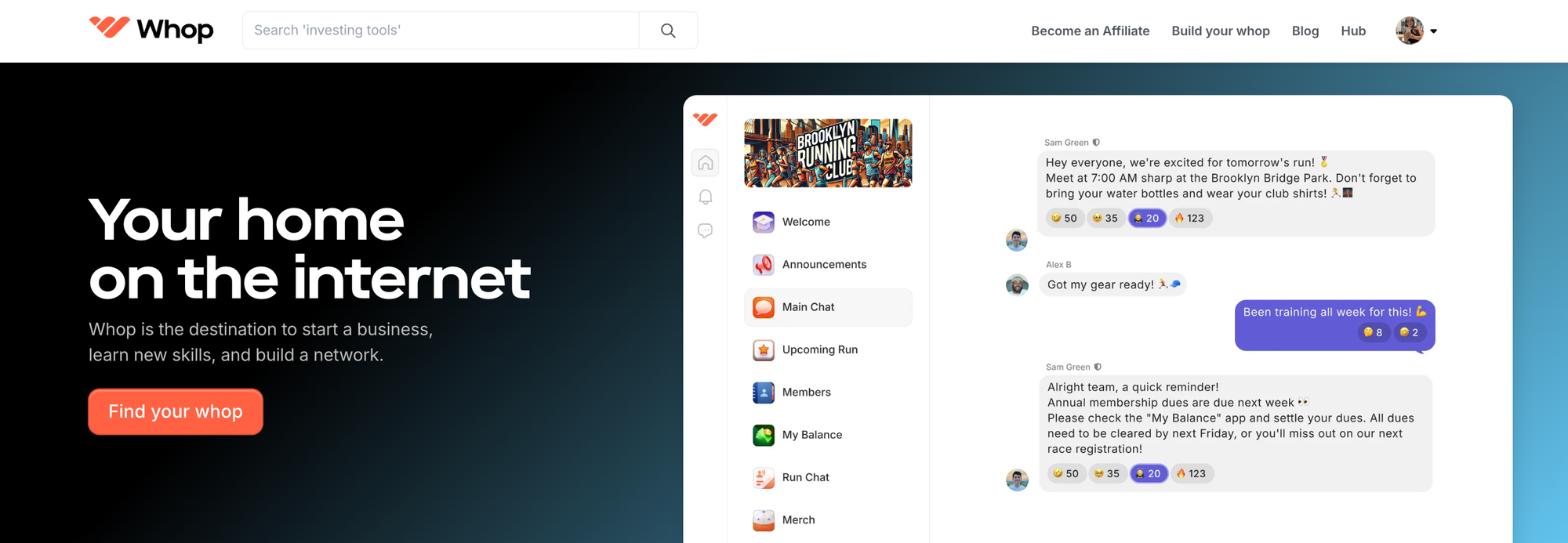When it comes to online business models, selling digital products is one of the best ways to do it. The costs are low, the operation is simpler than other businesses, and the “manufacturing” is essentially nonexistent—you don’t need to worry about storage or shipping.
However, the digital product market, like so many others, is saturated. Thousands of businesses are spread across the internet, selling similar products and offering the same services. How do you stand out in this sea of competition? Great marketing.

And no, just having a good product isn’t enough. To stand out and be successful, you must know how to market your digital products effectively.
So, keep reading and find out everything you need to know about how to market digital products.
What are Digital Products?
Digital products are intangible goods or services that are delivered in electronic form to customers. Unlike physical products, digital products don’t require manufacturing, storage, or shipping, making them easily scalable and accessible to a global audience.
Common types of digital products include:
- Software: Applications, programs, and tools designed for specific tasks, such as office productivity (e.g., Microsoft Office, or graphic design softwares (e.g., Adobe Photoshop). Software can be sold as one-time purchase, subscription, or via licensing models.
- Digital Art And Design: Can be digital illustrations, graphic designs, 3D models, or digital photographs. Often used by businesses, marketers, and consumers for various purposes, from decoration to ad campaigns.
- eBooks: Digitally published books available in formats like PDF, EPUB, or Kindle. They can cover any topic, from fiction and non-fiction to instructional guides and specific knowledge.
- Online Courses: Education content delivered via online platforms, like Whop, including video lessons, written material, quizzes, and interactive assignments. Courses can cover a wide range of topics, from coding and digital marketing to art and cooking.
- Printables: Digital files that consumers can print themselves, such as planners, calendars, art prints, or educational worksheets. Sites like Etsy are very popular marketplaces for these types of digital products.
- Audible and Visual Content: Videos such as movies, tutorials, and animations for educational or entertainment purposes. Songs, soundtracks, podcasts and audiobooks are popular digital products as well.
- Mobile Apps: Applications designed for smartphones and tablets, ranging from games and utilities to productivity tools and social media platforms.
The Pros and Cons of Selling Digital Products
Like we said earlier, selling digital products is a profitable business model with many advantages. But despite the many pros, this business model has some drawbacks to consider.
Pros of Selling Digital Product
Low Production Costs
Once created, digital products typically have zero marginal production costs compared to physical goods. You don’t need to worry about manufacturing, inventory, or shipping.
Scalability
Digital products can be sold to an unlimited number of customers without additional costs, allowing for easy scaling. Whether you sell one or one million copies of your digital artwork, for example, your costs remain nearly the same.
Passive Income
Once a digital product is created, it can generate income continuously with minimal effort required for maintenance. This makes it possible to earn passive income over time.
Ease of Distribution
Digital products are easy to distribute via various platforms, such as websites, online marketplaces, and social media. Delivery is instant and requires no physical logistics, so you can also sell internationally.
Cons of Selling Digital Products
Intellectual Property Theft
Digital Products are susceptible to piracy and unauthorized distribution. Protecting your intellectual property can be challenging and pirated copies can cut into your profits.
Limited Sensory Appeal
Unlike physical goods, digital products lack the tactile, visual, or olfactory appeal that can influence purchasing decisions. Some customers may prefer tangible items over digital ones, creating a challenge for products like eBooks and guides to find the right audience.
Refund and Chargeback Risks
Digital products are often more prone to refund requests and chargebacks, especially if customers are dissatisfied or if the product is not as described. If a digital product has any error or defect, it can’t be restocked, just corrected. (Hint: Whop helps you to fight disputes and chargebacks with the Resolution Center).
Marketing Your Digital Products
Now that we've looked at what digital products are and the pros and cons of selling them, let's take a look at how you can market these digital goods. Marketing digital products requires a strategic approach that leverages value propositions, uniqueness, and online platforms to reach your target audience.
1. Define your Digital Product
Define your “what.” Do you want to produce and sell online courses? Are you an experienced designer who produces digital art and wants to monetize your work? Or do you create eBooks and digital guides for sale? The type of digital product you sell can define your marketing strategy, as well as the platform where your product will be sold.

And when we talk about platforms, we’re referring to the different marketplaces on which your online store can operate. It’s important to know that, even though you can technically sell on several marketplaces, some are better suited for certain types of products. If you sell online engineering courses, for example, platforms like Udemy are better suited for your product (but beware of the fees for Udemy instructors!).
2. Identify Your Target Audience
Once you know what type of digital product your business will work with, the next step is to identify the target audience you want to reach.
Determining who your potential customers are is based on factors like age, interest, profession, and online behavior. This is important because identifying your target audience is knowing who your marketing efforts are geared towards and will literally affect everything from copy to visual ads.

Using the same example of online engineering courses. This is a type of product that is more interesting to older audiences with a higher level of academic knowledge. So, it’s wise to think of strategies that speak to this type of audience. Running ads on LinkedIn, a social media platform aimed at professionals, would likely be more effective to promote online courses.
Identify the problems your digital product solves for the customer and tailor your messaging to emphasize how your product meets these needs. Even if you don't have a large customer base at first, this can help you gradually build traffic.
3. Generate Buzz Around Your Product with a Pre-Launch Campaign
With your product decided and the target audience confirmed. It’s time to generate some buzz around your products.

When introducing a new product, create excitement by initiating a pre-launch campaign. Depending on your product, share sneak peeks, start a countdown to the release, and offer special preorder incentives to encourage early purchases.
Give your product to industry bloggers and influencers and encourage them to share their insights with their followers.
4. Leverage Content Marketing
Content marketing involves creating and sharing valuable, relevant content to attract and engage your audience. This could include blog posts, videos, or even podcasts. By providing useful content around your product, you can build trust with potential customers before they even consider buying.

Content marketing also supports SEO efforts. A blog with SEO-optimized articles using effective keywords can drive organic (free) traffic to your business.
5. Implement Email Marketing Campaigns
Email marketing is a great way to attract new leads and keep your customer base informed about any promotions, news, or launches that your business has.

It may be considered an old-school strategy compared to posting on social media posts and short-form videos, but, in many cases, a well-written email can convey more information and attract more interest than a simple social media post. Especially since the people you’re writing to already chose to sign up for your list.
6. Use Social Media Marketing
Still, never underestimate the power of social media to market your digital products. Social is a great source of traffic—both paid and organic—and offers a variety of tools for advertising campaigns and performance monitoring.
It’s even possible to use influencer marketing, partnering with famous content creators to market your digital products and reach a wide audience more efficiently.
7. Offer Free Trials or Demos
Give your potential customers a taste of what your product has to offer. This marketing strategy is especially useful for businesses focused on selling online courses, music, or products that require subscriptions, because it increases interest in the product based on its quality.
If you sell digital artwork, you can also offer free templates or pieces as a special promotion. If your potential customers like the demo, they're more likely going to buy the full product.
8. Collect and Showcase Customer Reviews and Testimonials

Social proof is a powerful motivator in the decision-making process. Encouraging satisfied customers to leave reviews and testimonials about your product and showcasing them on your website, social media, and other marketing materials can build trust and credibility for your digital product and brand.
9. List Your Products on Online Marketplaces
Selling your products on the biggest marketplaces is actually one of the simplest marketing strategies you can adopt because your product listings will be accessible to a huge active buyer base.
Of course, your digital products will be competing with other businesses. But listing your products on online marketplaces is enough to potentially introduce your products to consumers who may not be familiar with your brand.
Examples of the best marketplaces are Etsy, eBay, Amazon, among others. But the best platform for selling digital products is Whop.
The Whop Marketplace features thousands of creators across diverse categories and reaches millions of customers each month. It’s super easy to get started and the transaction fees are some of the lowest in the industry, with no platform subscription fees.
10. Think About Traffic Sources
To put it simply, a traffic source is the path that leads users to your product, like a website or a business profile on social media. Understanding traffic sources is crucial for digital marketing because it helps you identify where your audience is coming from and how effective different marketing efforts are in driving sales.
Traffic itself can be divided into two types: organic traffic and paid traffic. Organic traffic is defined as consumers who come to your product in a natural way, whether they already know about your product or not. Paid traffic, on the other hand, are consumers who come to your product through an ad that you paid for.

Platforms such as Instagram, LinkedIn, and TikTok are great traffic sources—both paid and organic—as they are networks with a large number of users able to buy online, making them great for selling digital products with many tools for paid advertising as well.
Whop hosts any type of digital product you may want to sell, from community subscriptions to online courses. And once you get traffic, you can send that traffic directly to Whop to sell your digital products without complications or aggressive fees.
Whop: The Best Place to Market, Sell, and Host Your Products

Setting up and marketing products on Whop is straightforward. First, sign up and create your initial "whop," which acts as a central hub for selling and managing digital products like eBooks, videos, apps, and more. The platform even includes a course creator for developing polished, interactive courses directly on Whop.
One of Whop’s standout features is its ability to foster a community around your products. Use the Chat app for direct communication, the Forums app for Q&A and discussions, and the Video app for hosting calls and webinars. Utilize Whop’s chat and social features to host engaging challenges. Afterward, use the Giveaways app to distribute prizes. Adding new features to your whop is easy with a simple activation process—no coding required.
These features help create an engaging environment for your audience, which in turn creates social proof - once new members see others in your community paying for your services and products, they will trust in you and your brand. Another way that you can leverage social proof is by automatically displaying customer reviews and comments on your Whop storefront. This helps build trust and credibility from the start.
Develop your content and build a collection of public blog posts and forum content. Since this content is indexed by search engines, it benefits from Whop's strong SEO, giving your product a head start in search marketing. Or, keep all of your content private and behind a paywall, and just put your whop link in your social media bio.
With flexible pricing options, Whop can serve as your Merchant of Record or a third-party payment processor. Whop supports various pricing models, including one-time payments, subscriptions, and Buy Now, Pay Later, tailored to your audience's preferences.
In addition to selling through your own whop, you can apply to be part of the Whop marketplace. This expanding platform features vetted products and attracts substantial traffic, offering you access to a larger audience.
Whop is a user-friendly platform with no upfront costs. You only pay a 3% fee on sales, making it a cost-effective solution for managing and promoting your digital products with a comprehensive suite of tools and features.
Join Whop today and start selling, and marketing, your digital products.
How to Market Digital Products FAQs
The frequently asked questions about how to market digital products
What Platforms Are Best for Selling Digital Products?
Platforms like Whop, Amazon, and Etsy are great for selling digital products. Optimize your listings with compelling details and utilize the platform’s marketing tools to maximize visibility and sales.
How Do I Drive Traffic to My Digital Products?
To drive organic traffic, leverage social media platforms by sharing engaging content and using relevant hashtags. Focus on content marketing by creating blog posts, videos, or tutorials related to your product. For paid traffic, use tools like Google Ads, LinkedIn Ads, and Meta Ads to give a boost to your ads reach.
- What is Digital Dropshipping and How to Get Started?
- How to Create Digital Products With No Experience
- Digital Product Strategy: Building a Roadmap to Create, Market, and Grow Your Digital Product Business
Why You Should Trust Us
Joe Niehaus is a seasoned content writer and ecommerce expert at Whop. He brings extensive experience in managing affiliate programs for a variety of ecommerce brands. His expertise has also been featured on leading platforms like Travel + Leisure and Business Insider.





